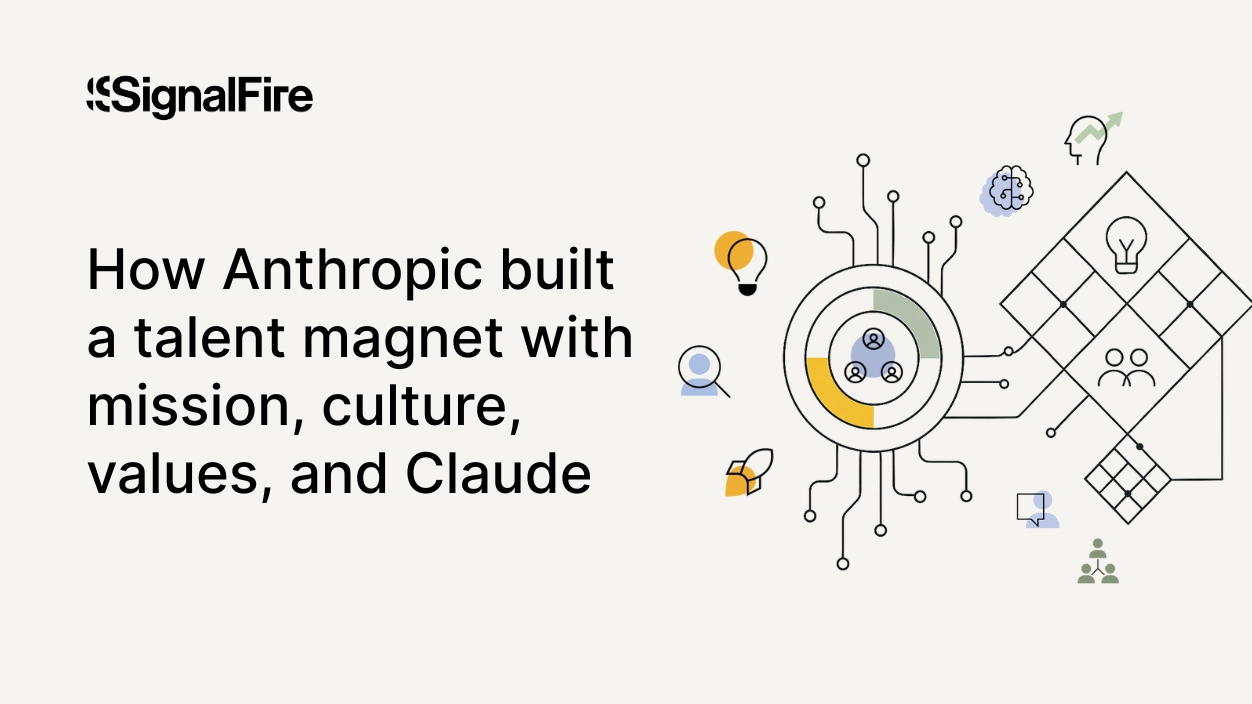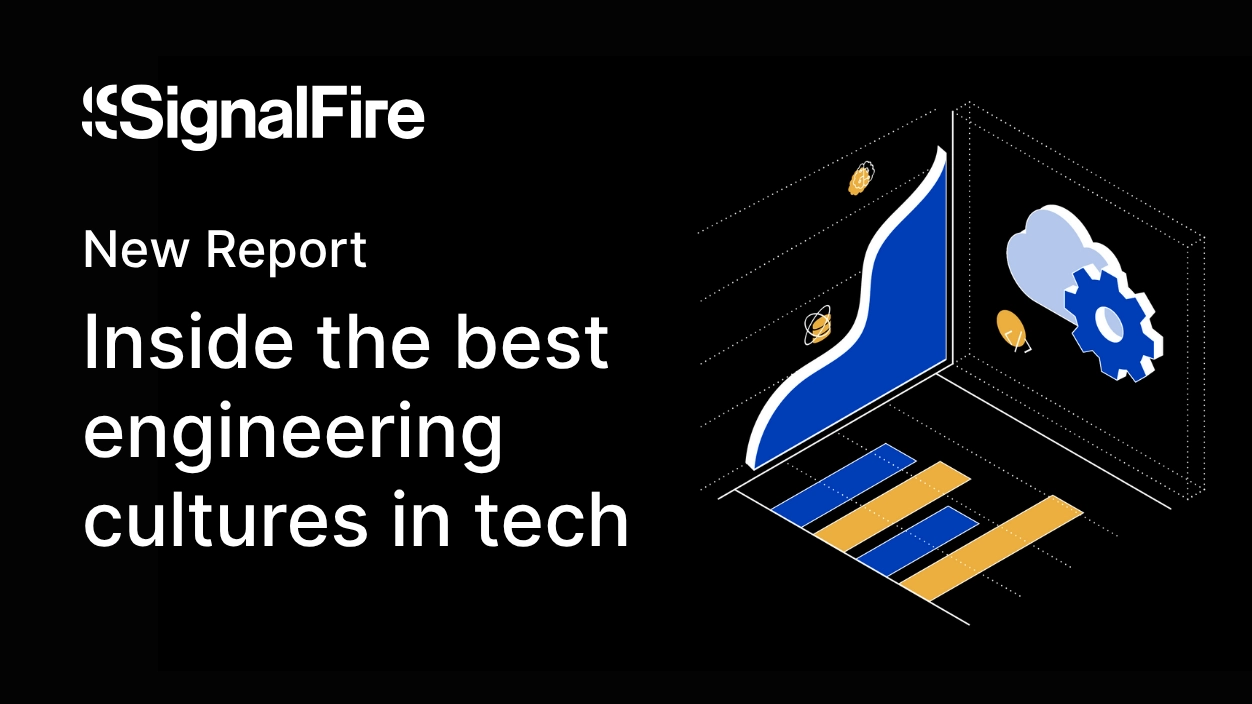
Exit interviews are so passé—literally.
Most companies wait until someone resigns to ask, “Why are you leaving?” But by that point, it’s too late. Enter the "stay interview," which flips the script: It turns a reactive offboarding conversation into a proactive retention tool.
Stay interviews give founders and people leaders real-time clarity on what keeps team members engaged, what might push them away, and how to create the conditions and culture for them to thrive.
Unlike performance reviews (where employees feel judged) or exit interviews (where intervention is far too late), stay interviews are focused on retention when it still matters. Think of them as a qualitative deep-dive counterpart to an engagement or employee pulse survey. They’re deeply human, low-effort, and highly impactful.
Here’s why this matters:
- Over 50% of U.S. employees are currently watching for or actively looking for new job opportunities, the highest rate since 2015, signaling the toughest retention climate in years.
- 42% of employees who quit jobs say their company could have done something to make them stay, according to Gallup.
- 72% of organizations rely solely on exit interviews. So most feedback comes after it’s too late.
- Among retention tools—like engagement surveys and loyalty programs—stay interviews are among the easiest to implement. It's no surprise that their use jumped from 33% in 2022 to 46% in 2023, according to Nonprofit HR.
On average, organizations lose between 30% and 200% of an employee’s annual salary due to turnover, which includes recruiting, onboarding, lost productivity, and a drop in morale.
Given the high cost of turnover, it’s worth investing in tools and processes that can spot issues before people leave. That’s where stay interviews can make a real difference.
When done well, stay interviews:
- Surface flight risks early
- Build trust between managers and their teams
- Reveal low-hanging fruit for quick morale wins
- Reinforce a culture of listening and continuous improvement
- Let you double down on what’s already working
In a tight labor market where the war for talent is more intense than ever, this isn’t just smart—it’s essential.
Case Study: How Peer AI uses stay interviews to drive culture and engagement
Peer AI (a SignalFire portfolio company) offers an agentic AI platform to help life sciences teams author regulatory documents faster and with higher quality, accelerating timelines for getting drugs to patients faster. From clinical study reports to INDs, Peer streamlines drafting and review—cutting timelines by up to 90%—while fitting seamlessly into existing workflows.
At Peer AI, stay interviews are a core part of how the company sustains a values-driven, high-performing culture. Held every six months—with zero prep required from employees—these conversations are not framed as evaluations or diagnostics, but as affirmations. Peer AI’s leadership team, including their CEO Anita Modi, sets the tone with a simple, sincere opener: “You’re incredible, and I want to be the best employer I can be for you. Let’s talk about what’s working and what could be better—together.”
That empathetic approach creates immediate psychological safety and trust, making it easy for employees to speak candidly. The very act of asking why they stay is deeply appreciated. People value the space to reflect, be heard, and directly shape how the company grows.
Here’s what they’ve uncovered and how they’re pulling this off:
1. Building toward something bigger
One of the clearest themes to emerge at Peer AI is a shared belief in the company’s long-term vision. Employees are energized by the sense that they’re on the ground floor of something transformative, trailblazing in their field, and creating a new category. Across roles and teams, there’s pride in building something from scratch, with a founding-team energy and a collective desire to make Peer AI best-in-class, both in platform quality and culture.
2. Team culture: Collaborative, low-ego, and emotionally intelligent
The culture is a major reason people stay. Colleagues “show up as they are,” there’s “no blame,” and cross-functional collaboration is the norm. Shared wins, openness, and emotional intelligence define how teams work together. People learn as much from one another as they do from formal training, whether it’s an AI engineer learning about medical writing or a scientific expert picking up insights from finance.
3. Growth and learning with high curiosity
The team shares a curiosity-driven mindset, with a constant drive to explore new domains, deepen expertise, and grow beyond current roles. From gaining more depth in AI and medical writing to expanding into leadership or finance, learning is embedded in their day-to-day processes.
4. Scaling smarter: Building infrastructure, processes, and momentum
At Peer AI, scaling isn’t just about adding headcount but also about building the backbone that will carry the company into its next stage of growth. That means tackling the unglamorous but essential work: tightening processes, refining the product, and smoothing out the inevitable bumps that come with moving fast.
Employees view this as an opportunity. Every operational hiccup is a chance to innovate, fix, and future-proof their company for the next growth phase. They’re streamlining cross-team handoffs, tightening product feedback loops, and implementing scalable systems while they still have the agility to experiment.
The payoff? Each improvement compounds the benefits—turning growing pains into a stronger foundation and setting the stage for the kind of scale most startups never reach.
5. Acting on the insights
At Peer AI, insights from the stay interviews aren’t left to gather dust. Leadership uses them to inform quarterly off-sites, refining how they communicate the company’s vision and reinforcing collective purpose. Practical changes have followed, like aligning job titles with responsibilities to signal growth paths or creating more visibility into how work impacts end-users.
The result is a feedback loop that strengthens trust, reinforces core values, and makes retention a living practice rather than a reactive scramble. Peer AI doesn’t chase every suggestion; instead, it listens deeply, acts intentionally, and keeps building a company where people want to stay because they’re seen, supported, and growing toward something bigger.
For founders, Peer AI’s experience is a masterclass in why proactive listening matters. The leadership team’s stay interviews didn’t just boost morale; they produced actionable insights that shaped how the company operates. Team members appreciated the space to reflect, be heard, and influence how the company grows. Stay interview responses confirmed that Peer’s core values, like driving impact, winning as a team, and being the expert, were more than words on a wall; they were lived every day. Team members cited how cross-disciplinary learning and a culture of emotional intelligence emerged as competitive advantages, fueling both productivity and trust.
The process also surfaces insights that would have been easy to miss. For example, some employees valued a title change not just for the increase in compensation; it was more about signaling alignment between responsibilities and growth trajectory. Others wanted greater visibility into how their individual work impacted the customer experience, deepening their connection to the startup’s mission. For founders, the takeaway is clear: small, precise changes rooted in what your team actually cares about can have an outsized impact on retention, engagement, and performance.
Tips for running an effective stay interview
If you’re ready to try stay interviews at your company, here’s how to get them right:
- Lead with safety, not scrutiny. Your goal is to create a space where people can speak freely without fear of judgment or repercussion. Make it clear from the start that this isn’t a performance review but a chance to understand what helps them do their best work, what’s getting in the way, and how you can better support their success. Frame the interview as a way to learn what the employee really needs to do their best work, and how the company can best support everyone’s success.
- Talk less, listen more. These interviews are about reading between the lines as much as they’re about what’s being said. Don’t treat it as a question-and-answer ping-pong game; dig into the themes shared with follow-ups. Go beyond a checklist of questions. Pay attention to tone, pauses, and what’s not being said. Use open-ended follow-ups to dig into themes and uncover what truly matters to your team.
- Close the loop and act on the learnings. Asking for feedback without following up is worse than not asking at all. Share the key themes back with your team, both what you heard and what you plan to do about it. Then, follow through. Even small actions will show your team that their input drives change and builds trust over time.
Sample stay interview questions
Need help getting started? Here’s a list of questions you can tailor to your company and culture:
- What were the top reasons you originally joined our company? Did we deliver on those factors and how?
- Looking back on your time here, what are you most proud of accomplishing?
- What do you look forward to the most when starting your workday?
- What makes you stay at our company?
- What are your career and personal goals at this company? What would you like to learn while you are here?
- Do you have any favorite meetings, rituals, or norms in how our team operates? Do you have any least favorite ones? Why?
- If you had a magic wand, what would be the one thing you would change about your work, your role, or your responsibilities?
- If you could improve the way our team works by 10% over the next 6 months, what organizational or team changes would you want to see?
- When was the last time you thought about leaving our team? Does the issue that prompted it still concern you?
- What might tempt you to leave the company?
- On a scale from 1 to 10, with 10 being “I’m staying for the foreseeable future” and 1 being “I’m leaving ASAP,” how would you rate your intention to leave? What’s the single most meaningful action the company can take to get the number closer to 10?
- Which of your interests, skills, or passions have we not fully tapped into yet?
- What would you like to learn while you are here?
- How do you like to be recognized?
- Is there anything additional you would like to share?
Additional prompts for digging deeper into the answers to the questions above:
- Can you tell me more about that?
- Can you clarify what that means to you?
- Can you share what that might look like in practice?
- How would you prioritize those things?
After the interview: Turning feedback into a 'stay plan'
If you don’t act on what you’ve heard and make that action visible, you risk undermining the trust you’ve built. The real value of a stay interview comes from showing your team that their input leads to change.
Here’s how to follow through and create a clear, actionable stay plan:
- Spot the patterns. Identify the top positive themes and no more than three constructive issues to address. The goal is steady, continuous progress, not a mile-long to-do list.
- Turn insights into action. As a leadership team, decide on concrete steps that align with both the business and the team’s needs and are realistic to deliver within 12 months. Assign clear owners and deadlines for each.
- Thank your team and close the loop. Show gratitude for their candor, and share the Stay Plan, ideally at an all-hands, town hall, or team offsite, so they see exactly how their feedback is shaping the company.
- Rinse and repeat! Run stay interviews as often as makes sense for your team size and stage.
Here are some recommendations:
- For smaller teams (under 20 employees), aim for a full-team round once a year.
- For larger teams, run them department-by-department or on each employee’s one-year anniversary. Roll up themes and actions into quarterly updates so everyone sees the momentum.
With competition for top tech talent at an all-time high, you can’t afford to treat retention like an afterthought. Stay interviews aren’t just a “nice-to-have,” they’re one of the most high-impact, low-cost tools you have to keep your best people from becoming your next exit interview.
Peer AI’s example proves it. When you make listening a habit, act on what you hear, and keep your culture aligned with what your team actually values, you don’t just reduce turnover, you build a company people are proud to grow with.
Retention isn’t won in the exit interview; it’s built in every conversation before that.
*Portfolio company founders listed above have not received any compensation for this feedback and may or may not have invested in a SignalFire fund. These founders may or may not serve as Affiliate Advisors, Retained Advisors, or consultants to provide their expertise on a formal or ad hoc basis. They are not employed by SignalFire and do not provide investment advisory services to clients on behalf of SignalFire. Please refer to our disclosures page for additional disclosures.
Related posts

Battle-tested playbooks: How top CX leaders are using AI agents to redefine customer support

What startups can learn from Anthropic's 80% talent retention rate

The SignalFire State of Tech Talent Report - 2025




